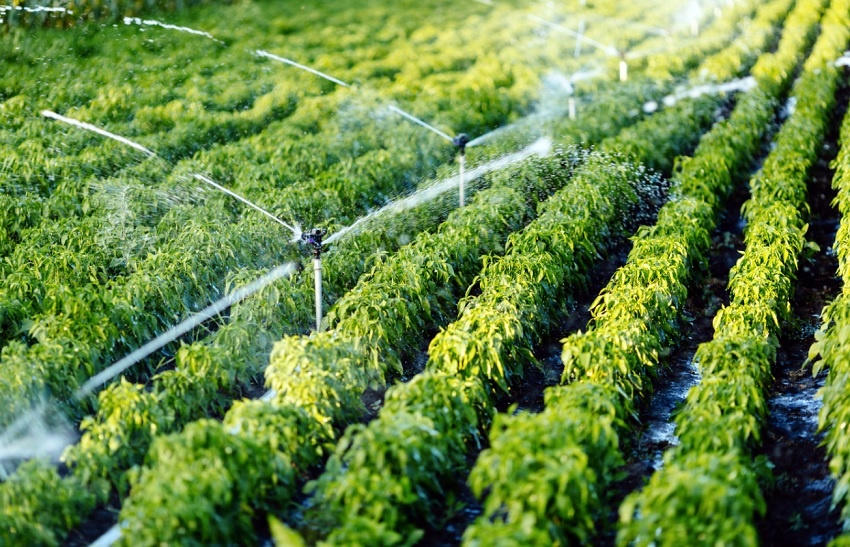Agricultural circular model gains traction
 |
| Agricultural circular model gains traction - illustration photo |
Nghiem Xuan Thanh, Secretary of Hau Giang Party Committee, last week worked with a joint venture between THD Vietnam Project Development JSC and THD Vietnam Agricultural Mechanised Construction JSC to discuss plans to develop an agricultural complex under the circular economic model worth around $1.74 billion.
The complex combines two components – the first is a $943.5 million project based on the agriculture-industry-energy (AGINE) model, with the main focus on high-tech organic agriculture in rice cultivation, linking the agricultural processing industry to food products and the production and use of renewable energy.
The second model, known as GreenDevi, has an investment capital sum of $782.6 million and represents green development characteristics in agricultural production, including livestock cultivation, circular production and processing without environmental waste, and maximum use of renewable energy to develop green agriculture and contribute to environmental protection and combat climate change.
Mai Huy Tan, creator of the two components, is also the founder of Duc Viet Sausage Company – which has also implemented a complex hybrid model for agricultural products and foods.
Tan said, “AGINE and GreenDevi are two circular and closed chains in farming, breeding, and processing. The main products involved are organic food, microbial fertiliser, high-quality food, livestock products, and renewable energy. The output of one component is the input of another component, so there is no solid waste.”
“The complex is expected to generate over $1 billion in annual revenues and provide work for 3,000 employees, while around $43.5 million will be contributed to the state budget per year,” Tan said. “The company will cooperate with foreign partners from the Netherlands and Germany and they will provide capital and technology, while the domestic joint venture is in charge of procedures and land.”
However, after three years of study, mobilising land for the AGINE and GreenDevi projects is still posing a major challenge. These projects cover an area of 230 hectares, thus the province is requiring the investor to clarify the feasibility of production, supply of machinery and equipment, technology transfer, consulting, partners, and financial commitment. Especially important to the project’s success is the creation of jobs and improving people’s living standards.
“The province will coordinate with investors to soon organise the implementation of relevant procedures to approve the project and support the investor to prepare a report to submit to the government for approval to change the purpose of land use for rice cultivation. Regarding the investor, they need to convince households of their plans in land acquisition, compensation, support, and resettlement,” Thanh said.
Circular economic models like these are still being hampered because there is not yet any specific framework, with enterprises implementing related projects based on loose regulations.
Nguyen Ngoc Hung, a lawyer at Connect Law Firm, told VIR that thousands of tonnes of organic waste have been released into the environment through the agriculture sector, which can be a beneficial resource for agricultural activities and for many other fields. However, this resource is being wasted due to a lack of specific regulations.
“Lack of legal framework is the largest barrier for businesses to approach capital sources. Investing in agricultural projects under the circular economic model needs huge amounts of money. Many international investment funds are willing to support capital for investors but failed due to lack of legal basis,” Hung said.
“Many Vietnamese banks, such as Vietinbank, cannot also disburse their support packages for fostering high-tech agriculture for these same reasons,” he added.
Regarding barriers relating to land, many domestic and foreign-invested enterprises with investments in high-tech agriculture also face problems with rent. Investing in the high-tech agricultural sector in general needs a large amount of space – however, at present, agricultural land holdings in Vietnam are typically small and highly fragmented, especially in the north.
According to Hung, the transfer of land use and lease rights still meets a lot of difficulties. “Meanwhile, investing in circular economic agricultural projects requires much more land compared to general high-tech agricultural ventures because they gather a closed farming-breeding and processing chain,” he said.
What the stars mean:
★ Poor ★ ★ Promising ★★★ Good ★★★★ Very good ★★★★★ Exceptional
Related Contents
Latest News
More News
- Heavy industries set for pilot greenhouse gas quotas (December 25, 2025 | 10:00)
- Swedfund invests in MSME growth and climate action in Vietnam (December 19, 2025 | 11:42)
- GreenYellow brings solar energy to light up remote schools in Tuyen Quang province (December 19, 2025 | 08:00)
- Charge+, Grab partner to develop EV charging network in Vietnam (December 18, 2025 | 17:11)
- Linking sci-tech and innovation to Vietnam’s net-zero future (December 18, 2025 | 14:31)
- Driving double-digit growth through green and circular transformation in Vietnam (December 17, 2025 | 09:00)
- Standard Chartered and ACCA deepen collaboration to develop Vietnam’s talent for a sustainable future (December 15, 2025 | 18:18)
- Schaeffler reports strong early output from Dong Nai solar project (December 12, 2025 | 15:16)
- Forestry conference highlights biodiversity and sustainability goals (December 09, 2025 | 13:35)
- Home Credit honoured among top 10 sustainable companies in trade and services (December 09, 2025 | 12:18)

 Tag:
Tag:




















 Mobile Version
Mobile Version